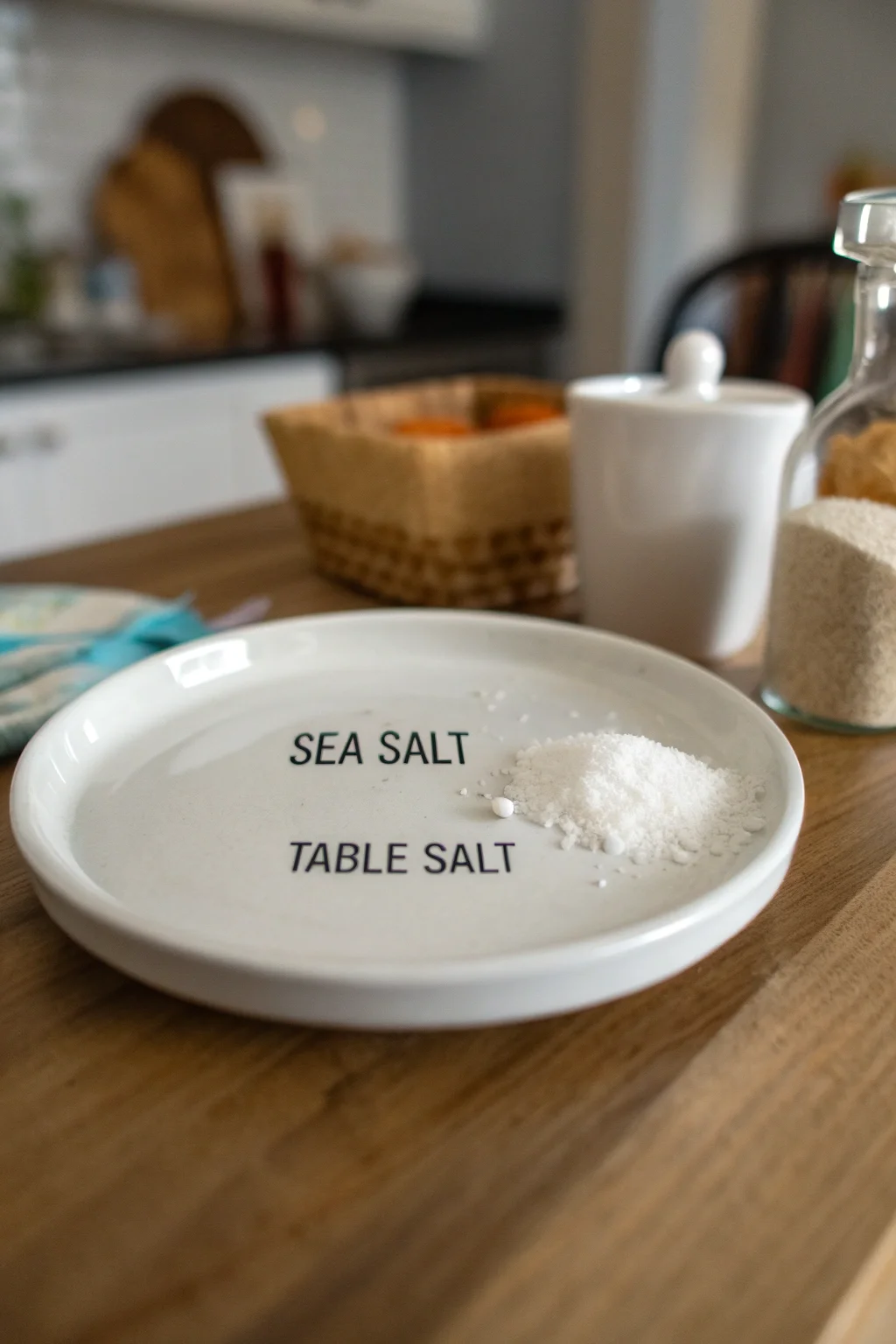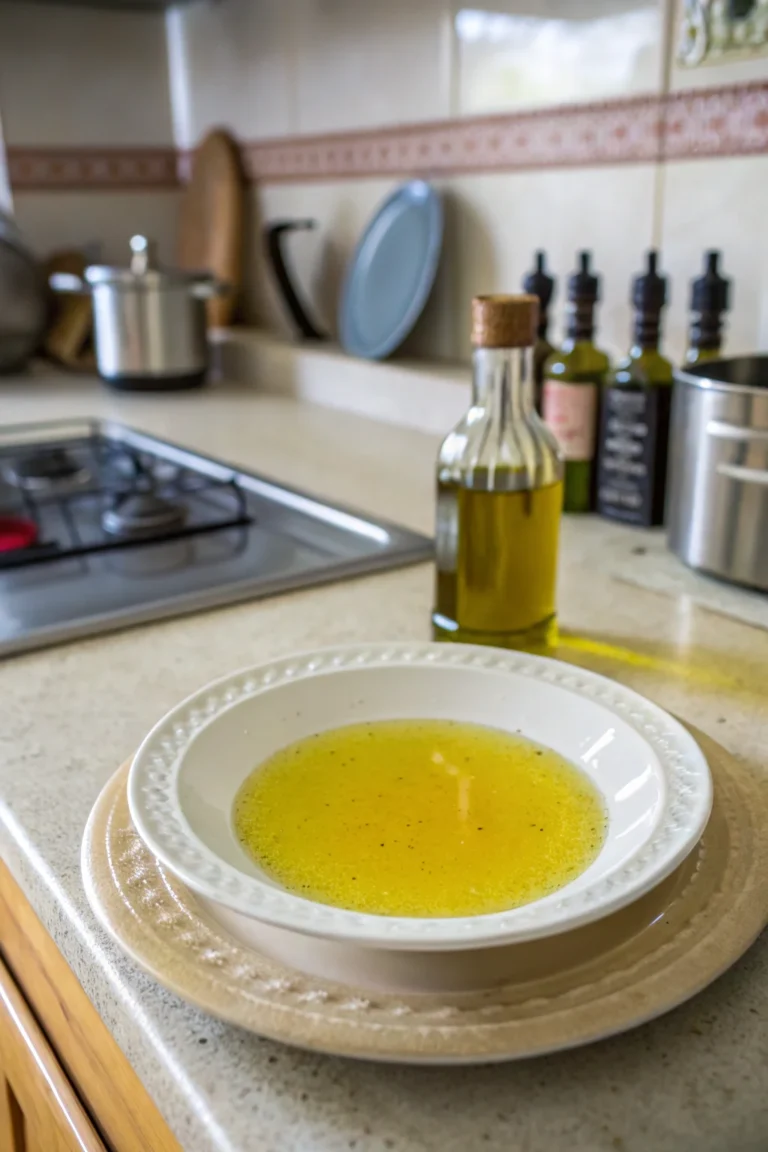What’s the Difference Between Sea Salt and Table Salt?
Salt is a staple in kitchens around the world, but not all salts are created equal. Many people wonder about the difference between sea salt and table salt. Understanding these differences can enhance your cooking, baking, and even your health. In this FAQ, we’ll explore everything you need to know about sea salt and table salt.
Table of Contents
What are the main differences between sea salt and table salt?

Sea salt and table salt differ mainly in their source and processing.
- Source: Sea salt is harvested from evaporated seawater, while table salt is mined from underground salt deposits. The geographical source can also add unique characteristics to sea salt, such as the mineral-rich waters of the Mediterranean or the Pacific, which can impart subtle taste variations.
- Processing: Sea salt is typically less processed than table salt, retaining trace minerals like magnesium and calcium, which contribute to its flavor and nutritional value. In contrast, table salt is more refined and often contains additives like iodine to prevent deficiencies and anti-caking agents to ensure it remains free-flowing.
These differences influence not only their taste and texture but also their nutritional content. Sea salt’s minimal processing allows it to maintain its natural composition, contributing to its slightly different nutritional profile.
How does the texture of sea salt compare to table salt?
Sea salt typically has a coarser texture compared to the fine grains of table salt.
- Sea Salt: The larger crystals add a satisfying crunch and can be visually appealing as a finishing touch on dishes. This makes sea salt ideal for sprinkling over grilled meats, roasted vegetables, or even sweet treats like chocolate chip cookies, where a little extra texture can enhance the overall experience.
- Table Salt: Its fine grains dissolve quickly, making it ideal for baking and recipes where even distribution is important. This ensures that the salt is evenly mixed throughout the dish, which is crucial for baking bread or making sauces where a uniform flavor is desired.
The choice of salt texture can impact the flavor and presentation of your dishes. For instance, using sea salt as a finishing touch can elevate a simple dish, while table salt is perfect for foundational seasoning.
Does sea salt contain more minerals than table salt?
Yes, sea salt contains more trace minerals than table salt.
- Sea Salt: It retains natural minerals like magnesium, potassium, and calcium, which can vary based on its source. These minerals contribute to the complex taste of sea salt, offering subtle nuances that can enhance the flavor of your dishes. For example, the presence of magnesium can impart a slight bitterness, while calcium and potassium can enhance sweetness and umami.
- Table Salt: Typically, it is stripped of these minerals during processing and may have additives like iodine for health benefits. While these additives are beneficial, they do not contribute to the flavor profile as the trace minerals in sea salt do.
Although sea salt contains more minerals, they are present only in trace amounts. Therefore, while they can contribute to the taste, their overall nutritional impact is minimal. The primary health consideration should still be the sodium content, which is similar in both sea salt and table salt.
How do the flavors of sea salt and table salt differ?
Sea salt and table salt have distinct flavors due to their mineral content and texture.
- Sea Salt: Offers a more complex flavor profile with subtle nuances, depending on the minerals present. This complexity makes it a favorite for chefs and home cooks alike who appreciate the layered flavors it can add to dishes. When used as a finishing salt, it can enhance the flavors of the food without overpowering them.
- Table Salt: Has a consistent, sharp taste due to its purity and lack of additional minerals. This predictability makes it reliable for recipes that require precise flavoring.
The choice between them often depends on personal preference and the specific culinary application. For instance, sea salt might be preferred in dishes where the salt’s flavor is meant to stand out, while table salt might be chosen for its consistency and ease of use in precise recipes.
Which type of salt is better for cooking?

The choice between sea salt and table salt depends on the dish and personal preference.
- Sea Salt: Ideal for finishing dishes, grilling, or adding texture to foods. It can also be used in dry rubs for meats, where its larger crystals can help develop a flavorful crust. Additionally, sea salt’s visual appeal and texture make it a great choice for garnishing.
- Table Salt: Best for baking or recipes requiring precise measurements, as it dissolves evenly. This makes it indispensable in baked goods, where its even distribution ensures a consistent flavor throughout.
Experiment with both to discover which enhances your cooking style. For example, try using sea salt in a salad dressing to add complexity, or use table salt to ensure your homemade bread has uniform seasoning.
Is sea salt healthier than table salt?
The health benefits of sea salt over table salt are minimal.
- Sea Salt: Contains trace minerals but in small amounts that don’t significantly impact health. While these minerals can enhance flavor, they are not present in quantities large enough to provide measurable health benefits.
- Table Salt: Often iodized, which helps prevent iodine deficiency. This is particularly important for those who do not consume enough iodine-rich foods, such as fish, dairy, and certain grains.
Both types of salt contain similar sodium levels, so moderation is key. Excessive sodium intake is linked to health issues like high blood pressure, so it’s important to use both types of salt sparingly. For more on healthy eating, check out our guide on balanced meal planning.
Does iodized salt offer any health benefits?
Yes, iodized salt helps prevent iodine deficiency, which is crucial for thyroid function.
- Iodine: Essential for hormone production and metabolism. It plays a critical role in the production of thyroid hormones, which regulate various bodily functions, including growth, metabolism, and energy production.
- Deficiency Risks: Can lead to goiter and other thyroid-related issues, such as hypothyroidism, which can cause fatigue, weight gain, and mental sluggishness.
For those who do not consume iodine-rich foods, iodized salt is a simple way to meet dietary needs. Learn more about the importance of iodine in your diet from Healthline.
Can you substitute sea salt for table salt in recipes?
Yes, but it’s important to consider the texture and volume differences.
- Conversion: Sea salt crystals are larger, so you may need to use slightly more to achieve the same level of saltiness. A general rule of thumb is to use about 1 1/4 teaspoons of sea salt to replace 1 teaspoon of table salt. However, always taste and adjust as needed, as the size of the sea salt crystals can vary by brand.
- Texture: Sea salt may not dissolve as quickly as table salt, affecting certain recipes. In liquid recipes like soups or stews, this may not be an issue, but in baking, it can lead to uneven seasoning.
Always taste and adjust as needed when substituting. Consider the dish’s final texture and appearance when deciding whether to make the switch.
Which type of salt has a longer shelf life?
Both sea salt and table salt have long shelf lives, but table salt may last longer due to its additives.
- Sea Salt: Natural and unprocessed but can clump if exposed to moisture. To prevent this, store sea salt in an airtight container in a dry place, and consider using a desiccant packet to absorb moisture.
- Table Salt: Anti-caking agents help maintain its free-flowing quality for longer. This makes it easier to store and use over time, as it is less likely to clump.
Store both types in a cool, dry place to maximize their shelf life. Keeping them away from heat and moisture will ensure they remain as fresh as possible.
Are there any environmental concerns associated with sea salt?
Yes, there are environmental considerations when choosing sea salt.
- Harvesting: Can impact marine ecosystems if not sustainably managed. Unsustainable practices can damage habitats and biodiversity, so it’s important to choose sea salt brands that adhere to eco-friendly practices.
- Microplastics: Potential contamination from ocean pollution. Studies have shown that microplastics can be found in sea salt, although the health implications are still being researched.
Opt for brands that prioritize sustainable practices. Look for certifications or statements on packaging that indicate the company’s commitment to environmental responsibility. For more on sustainable cooking, see our article on eco-friendly kitchen tips.
Do different types of sea salt have unique flavors?
Yes, the flavor of sea salt can vary based on its origin.
- Variety: Different seawater sources impart distinct flavors due to varying mineral compositions. For example, salts harvested from volcanic regions may contain minerals not found in other areas, contributing to a unique taste.
- Examples: Fleur de sel, Himalayan pink salt, and Celtic sea salt each offer unique taste profiles. Fleur de sel is known for its delicate flavor and texture, Himalayan pink salt is prized for its mineral-rich composition and striking color, and Celtic sea salt is recognized for its moist texture and robust flavor.
Experimenting with different types can enhance your culinary creations. Use them to complement specific ingredients or highlight the natural flavors of a dish.
Is there a cost difference between sea salt and table salt?
Generally, sea salt is more expensive than table salt.
- Sea Salt: Higher cost due to more labor-intensive harvesting and natural production methods. The artisanal nature of some sea salts, along with their unique flavors and textures, adds to their value and cost.
- Table Salt: More affordable due to large-scale production and refinement. Its consistent quality and low price make it a staple in many households.
The choice depends on your budget and culinary needs. While sea salt can add a special touch to gourmet dishes, table salt remains a practical and economical choice for everyday cooking.
Wrap-Up
Understanding the differences between sea salt and table salt can significantly impact your cooking and health. While both have their unique benefits and uses, the choice often comes down to personal preference and specific culinary applications. Whether you’re enhancing flavors with sea salt or relying on the consistency of table salt, each has its place in the kitchen. Explore more about salt and its uses in our article on culinary essentials.






